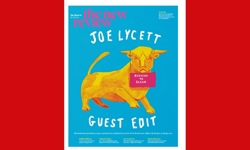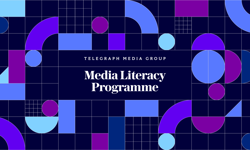India is currently the new wild west of the media world. It’s virgin territory for foreign media moguls looking for new profits and to tap into this rich golden vein. Foreign Direct Investment (FDI) opened the Indian press room doors in 2002; since then UK and US publishers have been treading carefully creating working relationships and commercial understandings. The mood is now changing and the gloves are off with serious players investing significant amounts of money into this tidal wave of media frenzy.
Having spent much of the last two and a half years working on developing circulation and distribution strategies in India, it’s time to look at this golden goose in terms of the current position and the potential for UK publishing companies.
For a UK circulation manager the Indian market is like a lottery win dream. The top ten Indian newspapers in the past two years have added over 2.3 million copies daily to their circulation and over five million readers. Amazingly the overall trend us up, so what’s happening in India that isn’t in the west?
| Top Ten Titles | ||
| Name | Circulation | Readership |
| Dainik Jagran | 1,910,562 | 16,403,000 |
| Dainik Bhaskar | 1,404,794 | 13,422,000 |
| Malayala Manorama | 1,309,052 | 9,207,000 |
| Anand Bazaar Patrika | 1,035,703 | 5,118,000 |
| Times of India | 1,881,943 | 7,098,000 |
| Lokmat | 884,411 | 7,284,000 |
| Hindustan Times | 1,107,390 | 3,154,000 |
| The Hindu | 989,157 | 2,743,000 |
| Eenadu | 1,039,276 | 8,111,000 |
| Rajastan Patrika | 804,043 | 5,912,000 |
| Sources: Circulation: ABC Jan-June 2004. Readership: NRS 2003 | ||
Literacy
We all know about India’s growing population numbers: at the last count 1.3 billion people. What we need to understand is that, with the government’s focus on education, the general literacy rate has been increasing rapidly over the past ten years. In southern India, with literacy levels hitting 99%, and a high percentage bilingual, they now surpass standards for school leavers from Hackney.
This new focus on literacy for all has caused a boom in the hunger for reading material. Books and magazine publishers are, in my view, slow in filling this need. Newspapers, however, are falling over themselves to expand their reach, create localized editions, give more pagination and, of course, try to win circulation supremacy over their competitors.
New technology
As with much of the world, the internet has encouraged a new interest in learning English. Of course, this has been historic for Indians following the presence of the British, but now the level of spoken English has increased tremendously and is virtually a common standard for those from the lower middle class upwards. In pure numbers, this group is larger than the total population of the USA.
The general mood of the country is one of vitality. India has leapfrogged technologically, helped ironically, by the fact that they were a few steps behind. No expensive TV cable network - so straight to satellite. Slow on house phone installation - so mobile telephone networks have taken off at a world beating pace.
The technology forecast for the forthcoming year is that the number of mobile phones (over 50 million) will outnumber landlines. Believe it or not, the first to take up mobile telephone technology in India were the fishermen. I learned this first hand. Imagine the picture: small southern Indian fishing port, a fishing boat about the size of a large canoe with two fishermen onboard heading back with a healthy catch. These characters looked as they did thousands of years ago, yet one sits talking on a mobile phone. An amazing sight, but as was pointed out to me by my Indian colleague, this was indeed common. By selling his catch whilst still at sea and fixing the price with fishermen in other ports, they could off-load the catch at a competitive price and manage an extra trip whilst the tide allowed. An increase of 30% profitability makes a lot of commercial sense.
The same goes for the internet. Broadband is enabling huge changes - over 33 million web surfers and growing rapidly. India can now cherry-pick already tried and tested technology and in so doing, bypass much of the learning curve experienced by the west.
Piracy
OK, you could see this as a problem. Indeed music, software, branded clothes, etc, are copied the world over, we know that. But in India, books are copied, and released onto the marketplace at ‘a reasonable market price’. Books such as Harry Potter or the Da Vinci Code are on sale in the local markets, within two days of their international release, for as little as £0.75 – but on average new pirated books are sold at 25% of the Indian cover price.
Piracy can only be attractive in a situation where the pricing is not reflective of the marketplace or where availability is restricted. Book publishers, especially those in the UK, should be active in this area to learn how to use this illegal network in bringing back revenues and increasing their distribution network. With a country as large as India the real potential for English reading material is just mind-boggling.
What’s on the move
So what’s on the move with UK interest? Well, FHM will soon be launched by Next Gen Publishing. This is the first real venture into the tricky male market, but the reward and potential is just enormous if handled with care. Gillette and Proctor and Gamble are expanding the grooming market - just imagine the size of the razors market alone!! We also know that this audience is hungry for magazine entertainment. Official figures show that women’s magazine have male readership as high as 65%.
Good Housekeeping magazine was launched late last year by the Outlook Group and this will appeal to the expanding middle classes. Business titles are very strong in India and an Indian edition of BusinessWeek is planned to join what is a very competitive marketplace alongside the Week, India Today and Outlook.
Newspapers
The ZEE–Bhaskar partnership have possible plans for three new newspapers including an English daily (possibly to be called the Sun?) This will, I believe, be the introduction of the popular tabloid. A sticky market; when a new tabloid called Page 3 was recently launched it quickly came under attack by government and religious groups causing early closure. At the top end Asian Wall Street Journal will be launched as a venture from Times of India / Dow Jones.
Who’s Who
So, who are the players? In terms of revenue, the Times of India (published by Bennett, Coleman & Company - BCCL) dominates the leader board but, as with all front-runners, they need to continually modernize and develop their products to prevent the enthused privately owned companies taking market share.
| Annual Revenues (for year ending March 2004) | |
| Bennett, Coleman & Company (BCCL) | £220.5 m * |
| Jagran Prakasham | £61.0 m |
| The Hindu | £55.3 m |
| Eenadu | £51.0 m |
| HT Media | £51.0 m |
| Living Media India | £39.5 m |
| Malayala Manorama | £37.2 m |
| Dainik Bhaskar | £36.5 m |
| Indian Express Publications (Bombay) | £30.5 m |
| Mathrubhumi | £18.5 m |
| Express Publications (Madurai) | £14.7 m * |
| Sakal Group | £14.6 m |
| Deccan Cronicle | £14.2 m |
| Mid-Day Multimedia | £11.3 m |
| * For BCCL, figures are year ending July 2004 and for Express Publications (Madurai) figures are for year ending June 2003. Investment / Joint venture | |
Foreign money is building the strength of the top players and many of the privately owned media groups are looking in that direction. As in the west the division of media power in the long run will be amongst those providing the strongest mix of printed media, TV and online interest. The current position is interesting and indicates the serious money being invested to build strong partnerships.
| New Money / Partnerships | |
| What deals and how are they spending the new cash | |
| HT – Henderson – Citigroup | £21.5 million |
| Business Standard – FT | £1.7 m |
| Jagran – Independent | £18.3 m |
| Deccan Chronicle IPO | £18.1 m. Expanding markets |
| Times of India – Dow Jones | Launching Asian Wall Street Journal |
| Times of India – BBC Worldwide | Transfer 29 magazines to JV Worldwide media |
| ZEE-Bhaskar (Pvt Placement) | £36.5 m. Possible three newspapers, one English daily (the Sun?) |
| Express IPO | £24.3 m. Expanding markets |
| Cyber Media IPO | £2.0 million. Launching BusinessWeek, among others |
Conclusion
The rush is on. The media boom is now taking place in India and, over the next few years, will help change the face of this vast untapped growth market. If you want a piece of the action then you need to act fast.
So to the UK
UK publishers always ask ‘so what is the big difference?’ Sorry to tell you but many of the thrills and skills of basic circulation work in the UK have been forgotten or lost. Many of the UK and US newspaper and magazine companies have shown little regard to retail relationships - something I encourage and promote non-stop in India through my consultancy.
Just how many circulation representatives are there in the UK, eagerly pushing for that extra sale? Not many and steadily diminishing. In the UK, publishers enjoy an excellent wholesale network. From personal experience, I would say UK wholesalers are the best in the world. However, with the best will in the world, wholesalers cannot give the same attention to the "X factor" as the publisher’s own employee.
From what I have observed, from my involvement in print media over thirty years, UK publishers - both newspapers and magazines - have gone soft.
My advice
Get into the market, get your hands dirty and find out from the front why your sales are in free fall. Indian publishers are training and developing field staff to give them the edge over the opposition and build the overall market. Yes, in the UK you may have all the bells and whistles in respect of allocation systems and controls, but to leave your sales to market demand and a computer program can only diminish the results. Circulation departments and managers must be there to develop sales and not just to count and report the losses. This requires experience, training and detailed knowledge of your customer base and, preferably, a flair for this particular industry. And of course passion.










